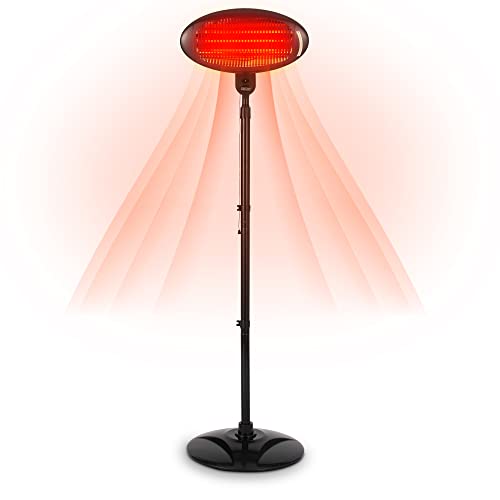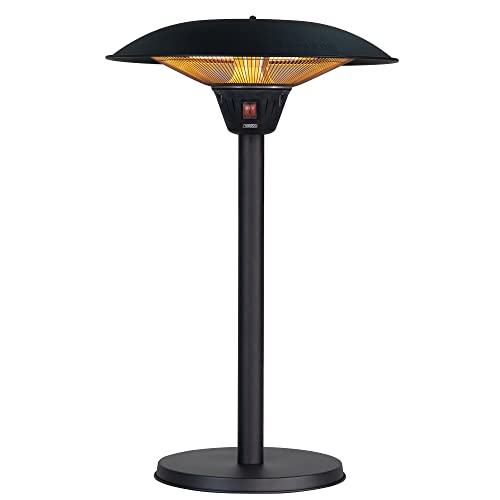See What Gas Fired Patio Heaters Tricks The Celebs Are Using
페이지 정보
Gus 작성일25-02-01 11:02본문
 Gas Fired Patio Heaters
Gas Fired Patio HeatersGas-fired patio heaters are becoming increasingly popular for commercial and residential outdoor areas. They are typically freestanding and come with a reflector dome or shield to direct radiant warmth downward.
 These models are typically connected to a gas line and eliminate the need for propane tanks, which reduces operating costs. However, they are less mobile than propane models and can be affected by strong winds.
These models are typically connected to a gas line and eliminate the need for propane tanks, which reduces operating costs. However, they are less mobile than propane models and can be affected by strong winds.Efficiency
Patio heaters are renowned for their ability to extend outdoor dining to the winter months. However, they could pose a fire hazard if they are not used correctly. The Technical Standards & Safety Authority (TSSA) and the Ontario Association price of patio gas Fire Chiefs (OAFC) warn that patio heaters are dangerous in the event that they are not installed, maintained or operated in a safe manner. They can cause fires, carbon monoxide poisoning or even death. The good news is that there are easy steps you can take to avoid these hazards.
The first thing to do is to check the heater for proper ventilation. Patio heaters that make use of natural gas or propane emit dangerous carbon monoxide. You should not use these heaters inside or in enclosed spaces. Never store a tank of propane inside. Propane tanks can only be used for the time they are needed before they begin to begin to rust. Instead, ensure that you have a propane tank cover or that your heater is properly vented when not in use.
The efficiency of heat can also be affected by the type of fuel used as well as the environment. These conditions are important, as windy weather can disperse heat and lower temperatures require more energy to maintain warmth.
Another factor to consider is the design of the patio heater. This can influence its heating ability and the power it produces. Freestanding models are less efficient than models mounted. Some models have reflectors to aid in concentrating heat and increase efficiency.
In the end, it's essential to test the power output of your patio heater natural gas heaters prior to you begin using them. This will ensure that they provide enough heat for your space, and that you won't be wasting electricity or gas. For instance, you might require a higher amount of British Thermal Units (BTUs) for your patio if it is large or you want to warm an outdoor event.
For bars, restaurants, hotels and other hospitality venues the variety of gas-fired patio heaters makes them a popular option. These units can be fueled by natural gasree feet away from any heater when they're in use to avoid burns. You should also not leave them unattended or shut them off when you're not in the area. Use only natural gas heaters that have been approved by your local plumber and are in good working order.
Based on the fuel source gas patio heaters can also be affected by wind. A strong wind can cause the propane cylinder to blow away or put out the fire if it's a model with the propane cylinder. Natural gas or propane models that have an attached hose need to be connected to an ongoing line and positioned outdoors to reduce the chance for explosion or fire.
Comfort
Patio heaters are available in a variety of styles and are powered by various fuel sources. The right one for your home will depend on the dimensions of the space you want to heat as well as the power source available, and your preferences in terms of appearance and control.
Gas-powered patio heaters are able to provide more heat than other types of. Thomas Bonfiglio, CEO and founder of Triple T Hospitality, says that's one of the reasons his restaurants mostly use dome-top and pyramid-shaped patio heaters in their New York and New Jersey locations. "The high heat output enables us to keep our customers comfortable while they relax outdoors in the winter months," Bonfiglio says.
The energy efficiency of a heater that is powered by gas is an additional factor to take into account. A heater that has an increased BTU rating will typically heat an area more efficiently and Gas Fired Patio Heaters faster than one that has an inferior BTU rating. Multiplying the square footage of the outdoor area by 20 will give you the amount of BTUs required to warm it.
In terms of power sources, propane-powered heaters are the most commonly used choice for homeowners. They can be portable and use the standard 20-pound propane tanks (like those used for your grill) that can be bought at a variety of hardware stores. But propane-powered models generally consume more electricity, Gas Fired Patio Heaters which makes them less environmentally friendly than other fuel options.
Electric-powered heaters, on other hand, need the plug of an outlet for power to operate. They're also a safer option than propane-powered ones since they don't emit harmful fumes or burn like gas patio heaters do. However electric patio heaters aren't as hot as other options and are limited in the they can generate heat.
The natural gas-powered heaters are a great option for those looking to connect their patio heaters an existing gas line. These heaters require a professional installation, and they can be more expensive to operate than other patio heaters. Natural gas heaters are the fastest and most consistent of all three options. This could justify the extra cost.
Versatility
There are a variety of options for outdoor heating using propane. It doesn't matter if opt for a freestanding patio heater, firepit or restaurant-style overhead unit. The key is to follow basic safety rules. These rules can be tricky to master, especially if you're dealing with a flaming flame or hot ashes which can remain hot for up to two whole days. But, with the right information it is possible to ensure that you are using your propane patio heater in a safe manner, and making the most of its capabilities.
Gas patio heaters can be used to heat large areas, covering up to 20 square meters. Gas patio heaters can be controlled with remote control, timer, or natural gas. They typically also require a minimum of 25% open space to allow for airflow and to prevent carbon monoxide build-up - which can be deadly if not properly ventilated.
Gas patio heaters, aside from the requirement for ventilation they are typically very easy to manage and maintain. They can be erected permanently in areas that are exposed to the elements, or recessed into flat roofs. They are usually fitted with an anti tilt switch that shuts the unit off when it detects that the unit is not in a straight position.
Patio heaters that burn wood however, are more difficult to operate and are a risk if not properly used. The major problem with these kinds of heaters is that they need to be continually filled with fuel, and the smoke and ash that is produced should be disposed of in a safe place. They are also harder to ignite and could cause sparks that could cause injury or fire.
Whatever type of patio heater you choose for, safety should be top of mind in terms of usage and maintenance. Keep a fire extinguisher close by and encourage children to play away from the heaters. Be aware of the temperature, and don't ignore any smells that could indicate a leak - both natural gas and propane contain mercaptan added to them to emit a sour smell should they leak.
댓글목록
등록된 댓글이 없습니다.

















